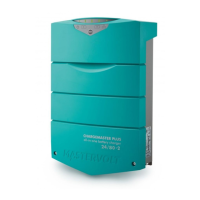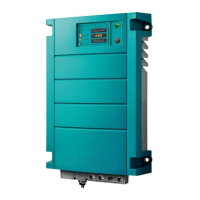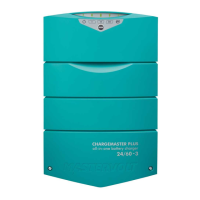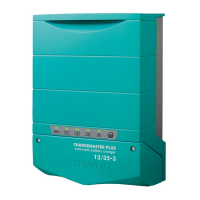TROUBLE SHOOTING
16 February 2010 / Chargemaster 12/25-3, 24-12-3 / EN
6 TROUBLE SHOOTING
If you cannot solve a problem with the aid of this chapter,
contact your local Mastervolt Service Centre. See
www.mastervolt.com. Make sure you have the following
information present if you have to contact your local
Mastervolt Service Center to solve a problem:
Article and serial number (See section 1.4)
6.1 FAULT FINDING TABLE
Malfunction Possible cause What to do
No AC-input Check AC wiring.
AC-input voltage too low (< 90VAC) Check input voltage, check generator.
No output voltage
and/or current
AC input frequency out of range Check input voltage, check generator.
Load that is connected to the batteries is
larger than charger can supply.
Reduce load taken from the batteries. Output voltage too low,
charger supplies
maximum current
Batteries not 100% charged Measure battery voltage. After some time this will
be higher.
Batteries almost fully charged Nothing, this is normal when the battery is almost
fully charged.
High ambient temperature Nothing; if ambient temperature is more than the
setting limit the charge current is automatically
reduced.
Charge current too low
Low AC input voltage. At lower AC input
voltages the charge current is reduced.
Check AC-input voltage.
Charge current too low See “Charge current too low” in this table.
Current to load is too high Reduce load taken from the batteries.
Charge time too short Use a battery charger with higher capacity.
Battery temperature too low Use the optional battery temperature sensor.
Batteries not fully
charged
Defective or old battery Check battery and replace if necessary.
Batteries are
discharged too fast
Battery capacity reduced due to wastage or
sulphation, stagnation
Charge and recharge a few times, this might help.
Check battery and replace if necessary.
Defective battery (short circuit in cell) Check battery and replace if necessary.
Battery temperature too high Use the battery temperature sensor.
Batteries are too warm,
gassing
Charge voltage too high Check settings (see section 5.3.4).

